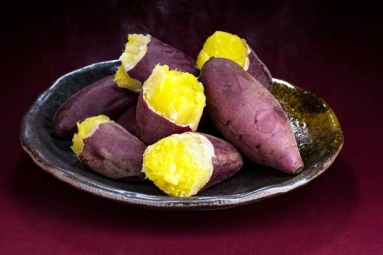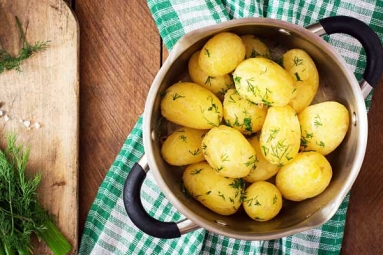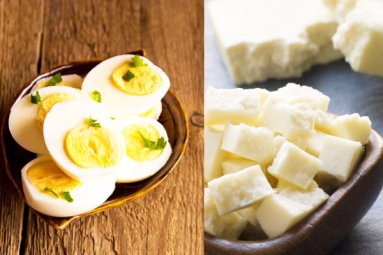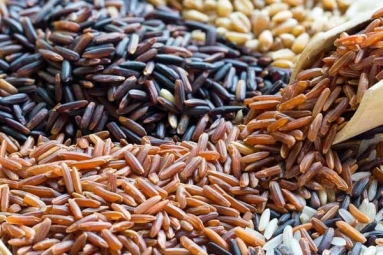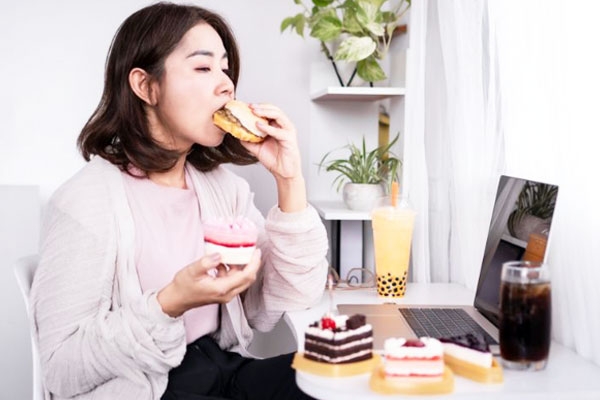
(Image source from: Canva.com)
From birthdays to farewells, cakes are essential to celebrate the important moments in life. It never goes out of style and people love trying new varieties. You remember the "burnout" cakes that made headlines, but while cakes add sweetness to your special day, they may not be as safe as we think. The Food Safety and Quality Authority of Karnataka recently issued an alert after finding carcinogens in 12 samples of bakery products. Of the 235 samples tested, 223 samples were safe and 12 samples contained contaminants. Food Safety Commissioner Srinivas K warned bakeries against using dangerous chemicals and artificial colors. The official said: "These 12 samples contained excessive amounts of synthetic colors such as Aloe Red, Sunset Yellow FCF, Ponceau 4R, Tartrazine and Carmoisine." Popular cakes such as Red Velvet and Black Forest are often made with artificial colors to make them more visually appealing but can pose serious health risks. So which cake is safe to eat?
Cake itself does not cause cancer, but certain ingredients such as colorings, preservatives to extend shelf life, and flavoring additives can cause cancer. Doctors say some baked goods contain artificial colors, particularly those made from coal tar, as well as preservatives such as nitrates and nitrites, which have been particularly linked to stomach cancer. Some artificial colors are toxic, carcinogenic and dangerous to human health. When combined with food, it causes oxidative stress in cells and tissues, potentially killing special cells in the cerebellum and brainstem tissue that are important in connecting the brain to the spinal cord and causing certain cancers, such as stomach cancer, which can be harmful if the color is used too often is used, especially if more than permitted artificial colors are used. Food dyes, especially when consumed in large quantities, can increase the risk of cancer, cause hyperactivity in children, cause allergic reactions and digestive problems.
Petroleum-derived artificial colors are commonly used in many foods, including cakes, breakfast cereals, candies, snacks, and beverages, especially those marketed to children. Even fresh fruits are sometimes dyed to increase color and uniformity. Some common dyes contain benzidine, a known carcinogen, but in small amounts considered “safe.” However, free benzidine increases the risk of cancer just below the worrying level (1 in 1 million people). In addition, benzidine bound in the dye was detected in much higher amounts. The possible effects of artificial colors include:
Blue 2: Correlation with brain tumors in mice
Green 3: linked to bladder cancer
Yellow 3: May cause a mild allergic reaction, especially in people sensitive to aspirin.
Yellow 6: Associated with adrenal and kidney cancer, but can also be an allergic reaction.
Red 3: Considered a possible risk factor for thyroid tumors
You'll understand why when you see how to make baking cakes. Baked cakes often contain margarine, which is cheap but unhealthy. With artificial colors and other ingredients added, it's no wonder these cakes are harmful. Are you wondering why baking cakes are being sold at just Rs 300 per kg? Imagine what these ingredients do to your body? In pastry school, in Red Velvet's class, the chef learned that if he actually used the amount of food coloring necessary to make the cake red, he could go to jail. As a business owner, if someone sends me a photo of a bright red or dark blue cake, I'm just as quick to say "no" as I would be to decline the order. However, many people choose price over quality. They prefer to buy cheap baked goods instead of baking cakes at home using more expensive and healthier ingredients. Choose safer alternatives like beet juice for red, cranberry for purple, turmeric for yellow, and paprika instead of artificial colors.
It's not just artificial colors. Other ingredients can also contain carcinogenic substances such as aflatoxin. In addition, cooking at high temperatures can release polycyclic aromatic hydrocarbons (PAHs), which can cause cancer. Artificial dyes aren't the only problem. The type of yeast used in the cake (baking soda and baking powder), the quality of the sugar and the type of fat are also important. Even though these colors are banned, they are still used because they are cheap. Fake cherries may look bright red at first glance, but when you compare them to fresh cherries you can tell the difference. Artificial items may look more attractive because they are made this way. Likewise, the cherries used in Black Forest cake are often canned and contain food coloring. However, most people don't take this into consideration when choosing a cake and opt for something that is visually appealing.
Instead of bright and vibrant cakes, choose pastels or traditional white cakes to limit chemical exposure. Dry cakes without icing are a healthier option. However, if you prefer cakes with frosting, make sure your bakery uses safe ingredients. Be sure to ask about the ingredients. Since you're spending money on cake, you have the right to know what's in it. Remember that cakes can be just as beautiful without artificial colors or chemicals. In addition to checking the ingredients, order from a bakery that specializes in natural or organic products. Many bakeries now offer cakes made from organic ingredients, natural vegetable colors and less processed sugar. These options are not only healthier, but also delicious and visually appealing. You can even bake your own cake at home since you have complete control over the ingredients. Try natural colors for a luxurious treat without harmful chemicals. With a little creativity, the cake is easy to make and safe to eat.



